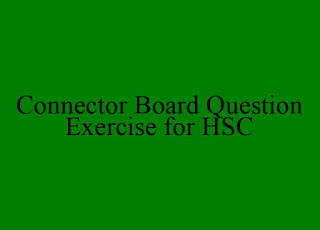The main stages of development of Yeats as a poet
The poetic career of William Butler Yeats encompasses a relatively prolonged period. During this time, his attitude to life and arts changed considerably. Besides he saw rapid changes in his own society and in the outside world. All these helped him to be a dynamic artist, the theme and style of his poetry being under constant evolution. Thus a study of his poetry tend to reveal that his poetic career falls into four distinguishable phases. They are:
1. The Celtic Twilight period. The term is used for the earliest poetry of Yeats. This Early Poetry includes poems published in The Crossways, The Rose, and The Wind Among the Reeds .The Happy Townland, No second Troy, September 1913 A Coat.
2. The poems of the Middle or Realistic period, which is essentially a period of transition. To this period belong the poems published in The Seven Woods, The Green Halmet and Other Poems, and Responsibilities.
3. The rich and complex later period of full maturity. The chief poems of this period are included in The Wild Swans at Coole, Michael Robert and the Dancer, The Tower, The Winding Stair and other Poems including the Words for Music Perhaps, and the Crazy-Jane group of poems.
4. The Last Phase, covering the poems of Yeats's last years published as Last Poems and Plays.
Yeats's early poetry, the poetry of the Celtic Twilight period, is frankly escapist. It is pre-Raphaelite and romantic; it has a Shelleyian fluidity and Keatsian richness of colour. From the ordinary world of harsh reality the poetry escapes into a dream-world of Irish legend, mythology and folklore. The Lake Isle of Innisfree is the most representative poem of this phase in Yeats poetry.
In this poem, Yeats reveals his desire to escape away from the din and bustle of town life to the remote island of Innisfree. He intends to build his own cottage and produce his dailies with his own hands. He also wants to be entertained by the sweet music of the birds and insects. He thinks that the rhythm of nature will lull him into peaceful sleep. This desire to go in contact with nature is so forceful in him that he can see the place in his imagination. In his mind's eye, he visualises the gentle movement of the lake water:
I will arise and go now, for always night and dayI hear lake water lapping with low sounds by the shore:While I stand on the roadway, or on the pavement grey,I hear it in the deep heart's core.
The second phase is a kind of transitional period during which Yeats tried to move towards a more realistic, condensed, flexible and ‘brutal’ style, characteristic of modern poetry. Two influences are to be noted around this period. The first was that of Ezra Pound and the second that of John Donne.
The process of the transition during this second phase was gradual but steady and the poems of this period reflect the mixing of the old and the new style, embodying a deeper knowledge of the world around him and of his own growing stature as a major poet.
In the third phase, Yeats arrives at the height of his poetic power and poetic expression. In most of the poems of this phase, there is a process at work which turns them into articulated meditations in which the identity of things is constantly being raised to a new power by the activity of thought. The range of subjects also becomes remarkably vast and the poems move with a compelling vigour and concentration.
In the last phase what is remarkable is the Lear-like mask of tragic abandon which Yeats assumes in many of the key poems The impending death of civilisation is accepted as necessary for poems of a universal process, which symbolises the recurring rhythm of birth, death and rebirth. Yeats believed that we begin to live only when we see life as a tragedy and the great poems of the last period demonstrate his belief.
The sum up, Yeats's poetic development start from the romantic themes and is carried from the dreamy rhythms to the treatment of any and every theme in active, inspiring rhythms and a diction perpetually refreshed by contact with common speech. The change in his poetry is gradual and continuous and the two elements behind this are the Easter Rebellion of 1916 and his passion for Maud Gonne.



